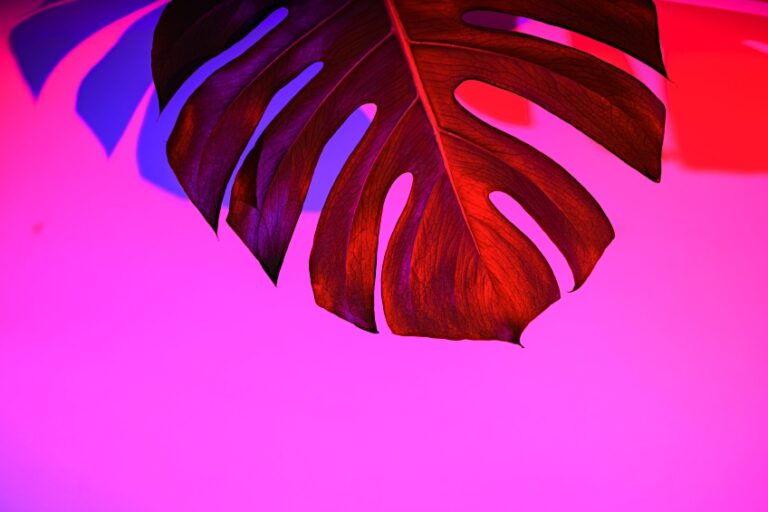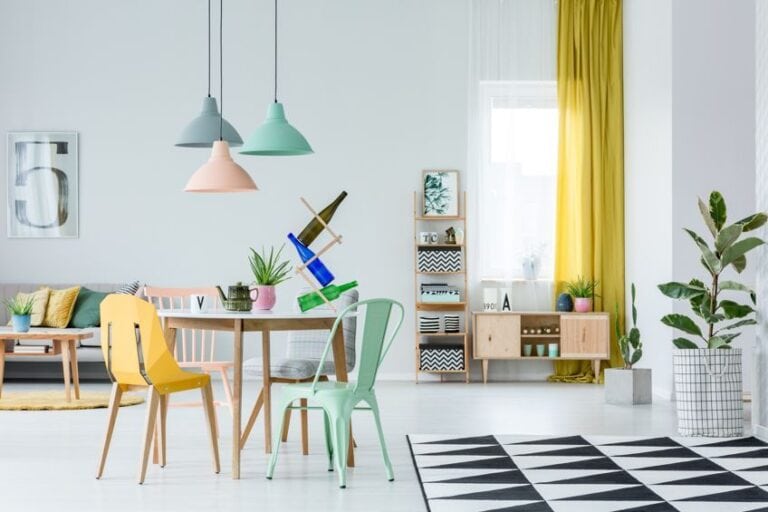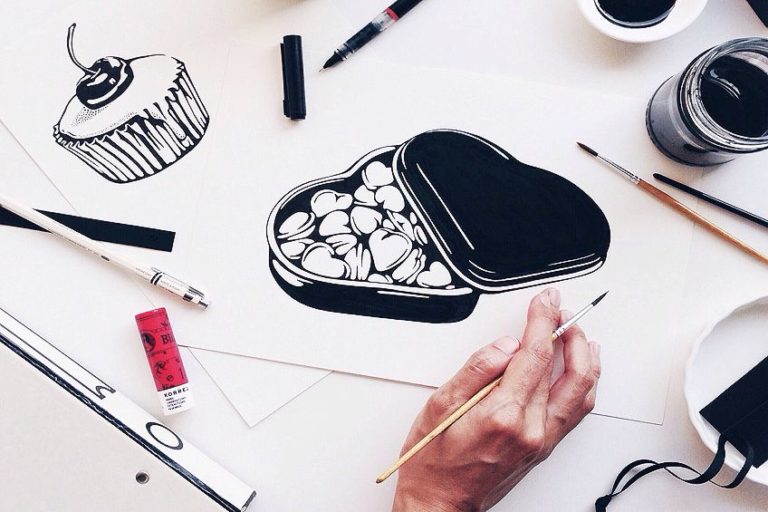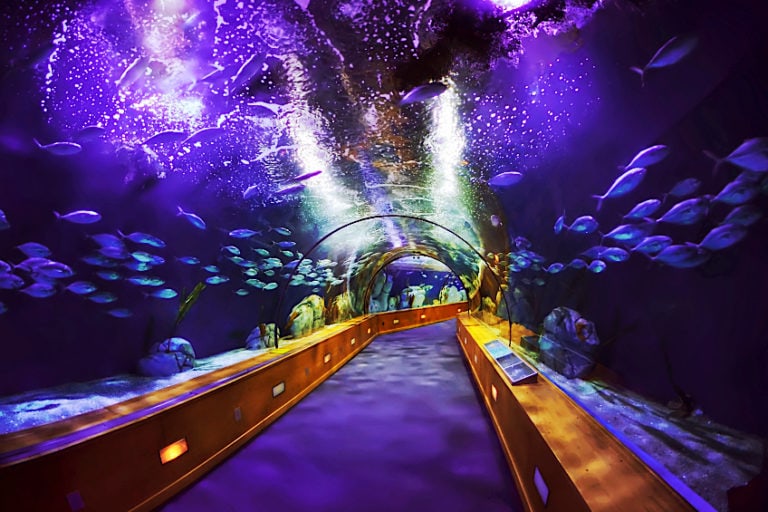What Colors Make Green? – How to Make Olive Green Paint and More
This post may contain affiliate links. We may earn a small commission from purchases made through them, at no additional cost to you.
Being able to mix colors is a key factor when painting. No matter the paint medium you are using, some sets only come with four or five basic colors and most of the time, green is not one of them. While there are many different shades of green paint, the purpose of this article is to get you comfortable with mixing colors and making greens of all variations.
Table of Contents
What Two Colors Make Green?
We all know the answer to this age-old question: Mixing blue and yellow will make green. However, the question is what type? Before you start playing around and mixing colors, you need to decide what type of green you are looking to create. This will depend mainly on the other colors you are using for the exercise.
If you are looking to make more than one shade of green, this will also be a problem if you only have one set of basic paint colors. Knowing what colors make light green is not going to work if you are trying to figure out how to make neon green paint, for example.
This is where a color chart comes in handy. Color mixing wheels and charts allow one to play with their colors and combinations. These will also explain the temperature of each color and how to work with them.
The shades of colors you are using will play an important part in the final results when they are mixed. For example, some colors will have other shades within their pigment’s base that will affect the mixing process. This is called color bias, and it explains how one color can fall across two color categories. Some blue paints, for example, will have either a warm or a cool color base, and this will determine how their color shows up on its own or when mixed.
So, now we can understand that the mixing process of how to make olive green paint will not correspond to that of making dark green paint. The colors used to make olive green will also be different to what two colors make dark green.
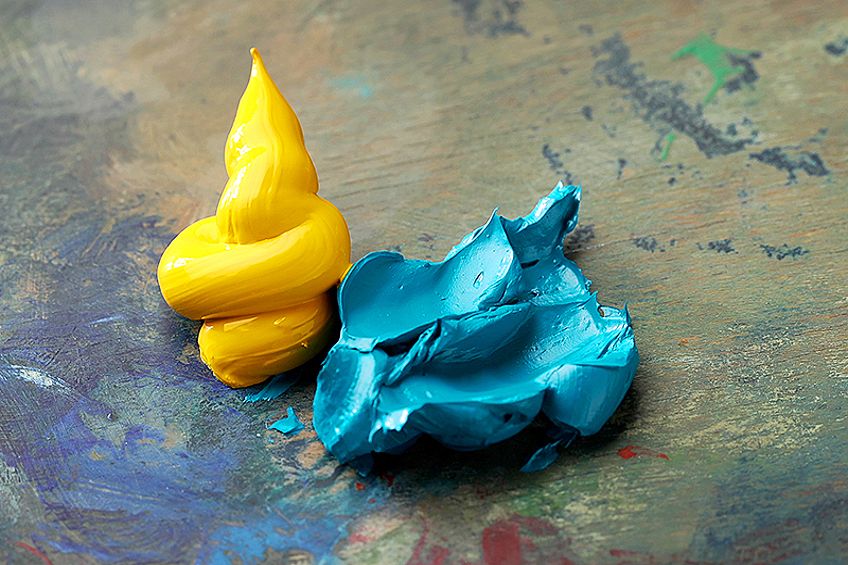
Mixing Warm and Cool Colors
Now that we know what two colors make green, the fun part is exploring all the different shades we can achieve. If you have some paints at home, whether they are oils or acrylics, try mixing up the blues and yellows of each set and notice the green hues you create. You will soon notice that adding more or less of either yellow or blue will alter the shade of green you get. This means that for a darker shade, adding more blue would be useful, while adding too much yellow will produce a lighter shade of green.
When mixing colors, there are some basic rules that you should stick to for the best results. This includes limiting the colors you are mixing to two primary ones and possibly a little white if you need it. This removes any chance of your new color having too many elements, which cause it to appear muddy or very dark. Adding a hint of white to your greens could lighten them up and add depth.
Differentiating Between Warm and Cool Colors
Yellows come in all sorts of shades, from the light and very pale to bright and almost golden. When working with these colors, you will need to explore them deeply in order to find the right color temperature or bias. When you apply these yellows to paper, you can see the color more clearly than when it is still in the tube.
Looking at the different yellows in front of you, you will notice that some appear to be richer and bolder, while others may carry a slight greenish or even bluish tinge to them. This is a clear indication of the color temperature of that paint. When working with shades of blue, the warmer ones will have more of a red or even purplish tint to them. Cold blues, on the other hand, will have hints of yellow or green in them.
When mixing these and other colors together, you always want to try to mix either two cool color bases, or a cool and a warm color together. If you had to use two warm colors, they would both essentially contain some reds or oranges within them. This means that your mixed color would contain three primary colors, which would then create that muddy look we were talking about.

Muting Colors
Put simply, muting colors refers to the effect used for dulling them. This may be useful when you are incorporating different tones of green and want to know how to make forest green paint, for example. Painting a forest or a jungle is a great example where many different greens can be used. You may want certain ones to pop in the foreground, so you would use lighter, more vibrant shades. This would then be achieved by using cooler blues and yellows when looking for what colours make lime green. The forest green we spoke of is naturally much richer and darker, which could then be muted to create a denser background foliage.
These two shades of green are enough to create depth and texture within your painting very easily. The process of muting happens when you apply one complementary color of paint to the other. So, if you have been looking at how to make olive green paint, then try mixing in a little red to your forest green and see what happens! Adding this complementary color to your green will make it flatter and less vibrant, but it is perfect for nature scenes or elements incorporating different shades.
Keep in mind, however, that the shade of red used will also have an impact on the outcome of the green. It may be helpful to try different reds with small amounts of your forest green to test out which shades you prefer. Your color mixing wheel is a top tool for these exercises, so try to find one that includes as many color variations as possible.
Finding the Right Shade of Green
As we have noted, color temperature is important when mixing paints, but what about the temperature of the mixed color? In this case, your greens. Depending on the base colors you have used, your green will either have warm or cool undertones to it.
In order to achieve the right green for you, you will need to adjust the color ratios and mix them around. Doing this will teach you what colours make mint green or how to make emerald green, for example. All these green shades have different color temperatures within them. This can be useful when wanting to do a cold landscape theme versus a warm one. The shade of green you use will affect the look and feel of your painting.

Cool Shades of Green
To make cooler shades of a color, you must mix two cool colors together. In this case of our greens, we would use cool blues and possibly some purples mixed in to create cooler shades of green. Adding purples can be useful as the darker purples contain more blue, which will automatically add a darker and colder feel to your green shades.
Making your greens cooler without wanting to darken them is easy too. This can be achieved by using violet-based tones and purples, as they contain more blue. This will not alter the color as much, creating a cool green.
Another option you can try is using various green shades to cool down your own green mix. Using greens that contain some blue in them such as teals or turquoise will enhance the cool tones of your green shades. Mixing in some bright or lighter greens will make yours more vivid and eye-catching. Darker green tones will darken your own shade of green, so be careful not to mix in too much.
Warm Shades of Green
To warm up any color, you would add in some warm tones such as yellows, reds, and oranges. These will add in a red or orange base to your mixed color, making it appear warmer. This technique is suitable when wanting to achieve full-bodied and fleshy earth tones. Adding these warm colors to your greens can also muddy them up, so do so carefully. If you are going for a darker green or are looking at what two colors make dark green, for example, then adding some crimson or other darker shades of red to your green shades will do just that.
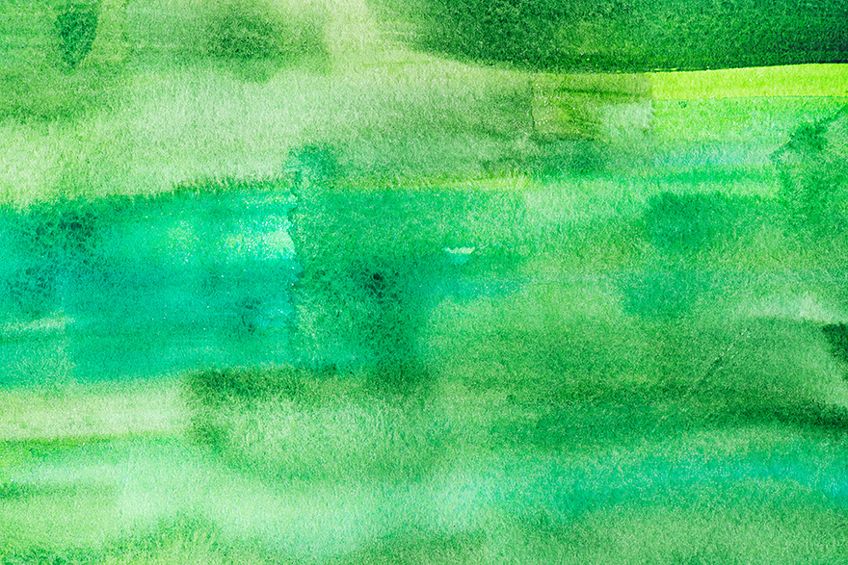
Using Tinting and Shading
When looking at what colors make green, we need to go more in-depth and possibly ask: What colors make light green? What colors make lime green? Or how to make neon green paint? These are all lighter shades of green and these colors are achieved through the use of tints.
Tinting is the process of lightening colors, and is usually done by adding hints of white.
Adding white may not be enough on its own, depending on the shade of green you are altering. For example, altering darker greens will often produce flat, light variations that do not contain much depth or texture. This is why adding some white with a small amount of another green can make a world of difference when trying to achieve vibrant, full-bodied colors.
Shading would be the opposite process of using black or darker colors. Funnily enough, most black paints have green as their base, so they do work well at creating darker green shades if need be. This process may seem simple, but it will take some experimenting on your part to get it right. In order to obtain the exact shade of green you are after, it is important to mix colors and play around until your get your desired result.
What Colors Make Light Green?
As we have covered above, making light green, lime green, or mint green is all about lightening up your colors. If you are trying to create textures and different effects, then incorporating these lighter shades will be beneficial. Sometimes, this process is not as simple as adding in some white paint. Depending on the shade of green you are working with, you may need to add some other techniques or colors in order to make your green stand out.
Sometimes, using white to lighten colors can turn them pale and dull. This is where your yellows come in. More yellow can be added to your greens to lighten them or even alter them. Yellow has the wonderful capacity to add vibrancy and body to your green, whereas the white may give it more of a flatter, more matte effect.
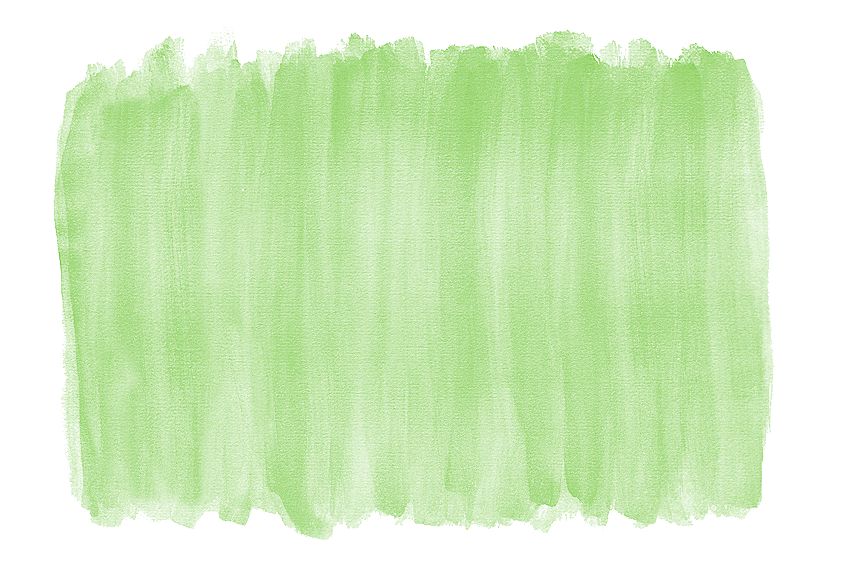
What Two Colors Make Dark Green?
Making darker shades of green may be a bit easier. These techniques will come in handy when asking how to make olive green paint or even how to make emerald green. Different color variations are useful when you are painting something in the same color, as the various shades and hues will enhance your work, making it more realistic.
Looking at photos of nature or being out in nature, you will notice that even in the greenest of places, there are all sorts of different shades of green, making everything stand out and have its own hue. This is what you want to achieve with your artwork.
We already know that some black can be added to your greens to darken them, and so can reds. The risk with adding black is that you may end up adding too much, causing your green to turn brown or too dark. Adding reds will likely flatten and mute your greens, but also adding too much will turn them muddy and brown. Another option to produce richer earth tones would be to add some brown or burnt umber colors. Like black, these are very dark, so be sure to only add a little at a time.
Purples are also a wonderful add-on when wanting to darken your various shades of green. The red within your purple will create warmer and more earthy shades of green, whereas adding cooler purples or violets will also darken them a bit and cool them down at the same time. This is a great method to use when painting greens in night scenes. Mixing in different pre-mixed greens is another simple way to darken your own shades.

Can You Make Green Paint Without Using Yellow?
Believe it or not, there are a few easy ways to make different shades of green paints without using yellow. You may have run out of yellow paint and do not have the time to get some for your next project. Well have no fear, below we will walk you through some unique ways to make green paint without using any yellow!
Mixing Orange and Blue to Get Green
We all know what colors make green, but what if you are out of one of those colors? Well, using orange as a replacement for your yellow will work if you are in a bind. Cool orange colors will work well to replace your yellows and complement your blue. These would be slightly more yellow-based orange paints as opposed to the richer red ones. These can be mixed with more than one shade of blue in order to achieve your desired shade of green.
Aside from orange, there are other warm tones you can use as an alternative to yellow. Although, keep in mind that the greens you produce will not be as bright as they would if you used yellow. Some options would be to use sienna or other burnt colors. You can cool these down by using various shades of blue and mixing these in. Adding some white may prevent getting a dark or brownish green.
If you happen to be out of blue, using some cool, purple tones may work well in producing a darker green. If you need to lighten this and want to go for a lime green or even mint, then adding some hints of white paint should do the trick. If you add some lighter shades of pre-mixed green to your mix, you will find that this enhances your color a lot.

So, What Colors Make Green?
Color mixing is a fun way to experiment and learn how to achieve various color combinations. The theory of learning color and scientific formulas for color mixing are a bit more technical, however. Below is a chart we have included for those keen on learning more about mixing greens and the exact formula one would use to achieve each type of green.
| Type of Green | Green Shade | Hex Number | Percent Red, Green, Blue (%) | Percent Cyan, Magenta, Yellow, Black (%) |
| Basic green paint | #008000 | 0% R, 153% G, 0% B | 85% C, 12% M, 100% Y, 2% K | |
| Forest green paint | #0b6623 | 0% R, 102% G, 51% B | 91% C, 34% M, 100% Y, 27% K | |
| Olive green paint | #708238 | 112% R, 130% G, 56% B | 59% C, 32% M, 100% Y, 13% K | |
| Sage green paint | #9dc183 | 157% R, 193% G, 131% B | 42% C, 7% M, 63% Y, 0% K | |
| Neon green paint (chartreuse) | #7fff00 | 127% R, 255% G, 0% B | 49% C, 0% M, 100% Y, 0% K | |
| Emerald green paint (teal) | #008080 | 0% R, 128% G, 128% B | 87% C, 31% M, 49% Y, 8% K | |
| Lime green paint | #c7ea46 | 199% R, 234% G, 70% B | 27% C, 0% M, 92% Y, 0% K | |
| Turquoise green paint | #3fe0d0 | 63% R, 224% G, 208% B | 58% C, 0% M, 29% Y, 0% K | |
| Blue-green paint | #0d98ba | 13% R, 152% G, 186% B | 80% C, 25% M, 17% Y, 0% K | |
| Aqua green paint | #00FFFF | 0% R, 255% G, 255% B | 53% C, 0% M, 12% Y, 0% K |
So, now you know what colors make green, take some time to experiment and actually play around with different colors, shades, and paint mediums – you will begin to realize what a difference all these tiny details make!
Frequently Asked Questions
What Two Colors Make Green?
Traditionally, blue and yellow are used to make various shades of green. However, if you do not have access to yellow, then a cool orange can be used as a substitute. If you are looking for an alternative to using blue, then adding cool purple tones will have a similar effect.
What Colors Make Light Green?
In order to lighten your greens, more yellow would need to be added. Another way to lighten colors is to add small amounts of white. This would come in handy when wanting to know how to make mint green paint, for example. Adding white will flatten your color, whereas adding more yellow will brighten it up.
How to Make Forest Green Paint?
Creating forest green is achieved quite easily by adding black or purples to your greens. Both of these are cooler colors and will assist in darkening your greens, so you can experiment with different amounts until you get your desired result.
What Are Warm and Cool Colors?
Warm colors are the shades that have an undertone of red in them. These include reds, oranges, and some purples and browns. When added to other colors, they will create rich, earthy tones. Cool colors have undertones of blue in them and can also be found in warm colors like using yellow paints with blue undertones. When mixing colors, you would usually use two cooler-based colors together or a cool and a warm.
Larissa Meyer is a 32-year-old mother from Michigan and creative spirit since childhood. Her passion for painting and drawing has led her to an education as an illustrator and a career as a freelance graphic designer. She has a Bachelor of Fine Arts in Illustration and a degree in Graphic Design. Larissa is a talented artist who is able to master a wide range of styles and techniques to bring her artistic vision to life. Her greatest passion is currently fluid painting and epoxy resin art. Larissa’s love for art and her knowledge and experience in illustration make her the perfect Creative Director for our fluid-painting.com team. She is the creative head of our team and shares her passion and knowledge with our community through articles and tutorials.
As a mother of a 2-year-old daughter, Larissa also understands the importance of fostering creativity in early childhood. She uses her experience and knowledge to help other parents inspire their children and develop their artistic skills as well.
Learn more about Larissa Meyer and about us.



